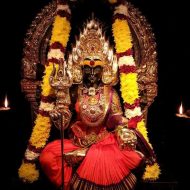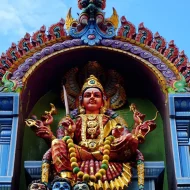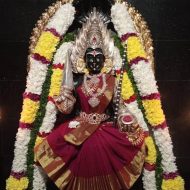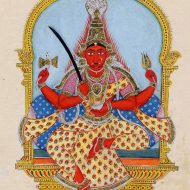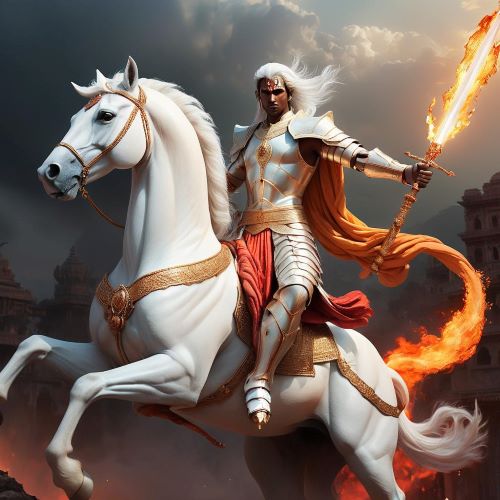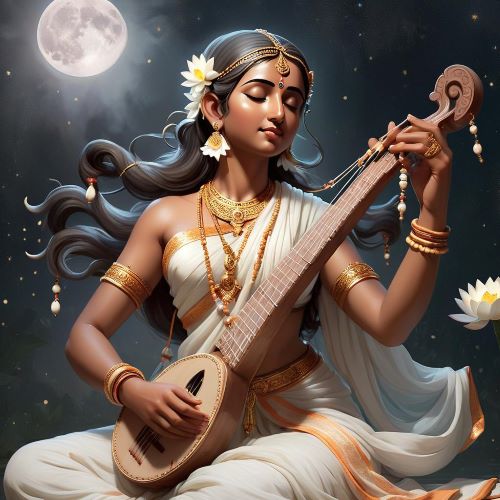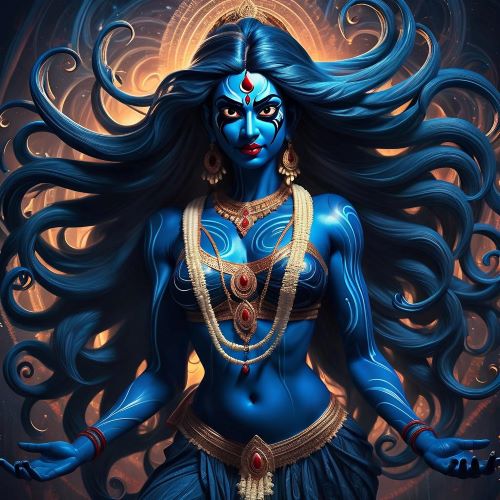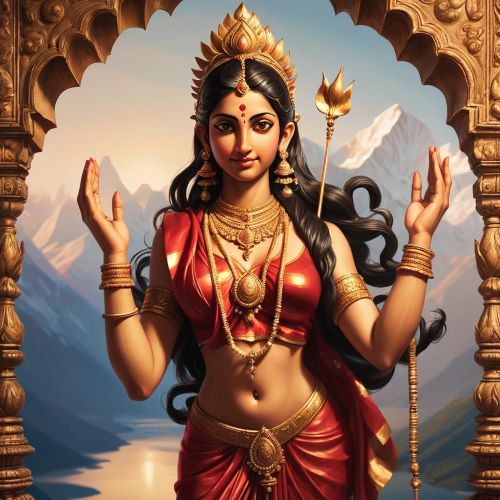Mariamman : The Village Goddess
Listen
At a glance
| Description | |
|---|---|
| Origin | Indian Mythology |
| Classification | Gods |
| Family Members | N/A |
| Region | India, Indonesia, Malaysia, South Africa, Vietnam |
| Associated With | Fertility, Rain, Medicine, Protection |
Mariamman
Introduction
Mariamman is a dominant deity in South India, particularly in Karnataka, Maharashtra, and Andhra Pradesh. She is regarded as a poor and needy Hindu goddess. The origin of this deity is related to the goddess Renuka, who is the mother of Parashurama, the child of Lord Vishnu.
The goddess Mariamman is often referred to as Amman. She is worshipped in various locations in South India, especially in the regions of Deccan and Tamil Nadu. During the late summer and autumn season, her festivals are held. The main focus of her worship is on bringing rain and curing diseases, such as chicken pox and cholera. The Mariamman is regarded as a righteous and benevolent deity by the people of South India. She is also regarded as a guardian of the people.
Physical Traits
Mariamman is commonly depicted as an exquisite youthful woman donning a crimson countenance and adorned in a scarlet ensemble. On occasion, she is illustrated with numerous arms that symbolize her diverse abilities, yet most depictions feature her with either two or four arms.
The customary portrayals of Mariamman present her in a seated or standing posture, often clutching a trident (trisula) in one hand and grasping a bowl (kapala) in the other. Among her hands, one might exhibit a mudra, frequently the abhaya mudra, a gesture intended to dispel fear. She might be visually represented with two facets—one showcasing her amiable disposition, while the other encapsulates her fearsome aspect, complete with protruding fangs and an untamed cascade of hair.
On occasion, in the absence of a physical deity or image, Goddess Mariamman finds embodiment through a brass vessel or earthen pot filled with water, embellished with neem leaves. In numerous instances, her presence isn’t confined within structures but rather mirrored in the natural world. She assumes a state of unadorned simplicity when portrayed through a stone rooted in the earth, signifying her divine essence. There are moments when an impromptu arrangement of earth takes on the semblance of her visage. Her essence permeates the entirety of the village, symbolizing her form as an extension of the collective community.
Family
According to the tale, Renuka, the spouse of Sage Jamadagni, became renowned for her unwavering devotion and virtue. It’s said that her virtue held such potent sway that she possessed the divine ability to draw water into unbaked vessels. However, a moment arrived when she inadvertently witnessed a king in the throes of passion with his wife by a riverbank, sparking adulterous notions within her. As a result, her divine powers waned, and Sage Jamadagni became privy to her lapse.
The sage fathered five sons, and in a fit of rage, he commanded them to sever Renuka’s head. While four sons declined, Parashuram, the fifth, willingly acceded to the grim task of beheading his mother. As Parashuram raised his axe to enact this somber deed, Renuka fled and sought sanctuary in the abode of a humble woman of low caste. Parashuram pursued his mother and, amidst the act of beheading, inadvertently severed the head of the low-caste woman, who had attempted to thwart the impending matricide.
Impressed by his son’s unwavering dedication, Sage Jamadagni granted Parashuram a boon. Without hesitation, Parashuram requested the restoration of his mother’s life. Agreeing readily, Sage Jamadagni presented him with a vessel of water to sprinkle upon the lifeless form. In his haste to revive his mother, Parashuram mistakenly affixed the head of the low-caste woman to Renuka’s body. Sage Jamadagni accepted this transformed state of his wife, Renuka. This manifestation of the Mother Goddess came to be known as Mariamman.
The Mariamman cult was able to adapt to the changes brought about by the evolution of Vedic Hinduism. Today, she is regarded as a manifestation of Durga and Parvati, and she is considered to be the sister of Vishnu. In the Mahabharata, there is a story about her. The story of Draupadi states that she was a manifestation of Kali, but she lived as an ordinary woman. She was the wife of the Pandava princes, and the secret to her existence was not known to anyone except Krishna. At night, she would go to villages in Tamil Nadu to protect the people.
Other names
Mariamman came to be worshipped in other forms like Pidari, Katteri Amman, Draupadi Amman and so on
Powers and Abilities
Mariamman possesses the ability to heal conditions categorized as “heat-based” ailments, including pox and rashes. During the hot months in South India (March to June), individuals journey significant distances while bearing vessels of water infused with turmeric and neem leaves, aiming to safeguard themselves from afflictions like measles and chickenpox. This practice resonates with the North Indian goddess Shitaladevi in its intent.
Followers of Mariamman also beseech her for familial well-being, encompassing matters such as fertility, robust offspring, and compatible life partners. The highly favored offering to her is “pongal,” a mixture of rice and green gram, often prepared within the temple complex or the shrine itself, employing terracotta pots and firewood. Several festivals dedicated to Goddess Mariamman incorporate nocturnal processions in which devotees carry oil lamps. Mariamman holds the status of a family deity for many residents of Tamil Nadu’s Thanjavur district. An established custom involves initiating worship of the family deity during significant events like weddings.
Modern Day Influence
As the Tamil diaspora dispersed to various corners of the globe, Mariamman journeyed alongside them, a natural progression given her role as their steadfast protector over countless ages. Hence, we now find Mariamman temples established in diverse locations such as Fiji, Indonesia, Sri Lanka, Malaysia, Mauritius, Myanmar, Singapore, South Africa, Thailand, and Vietnam. Truly, Mariamman, the village deity, has transcended borders to achieve international presence.
Related Images
Frequently Asked Questions
What is lorem Ipsum?
I am text block. Click edit button to change this text. Lorem ipsum dolor sit amet, consectetur adipiscing elit. Ut elit tellus, luctus nec ullamcorper mattis, pulvinar dapibus leo.
What is lorem Ipsum?
I am text block. Click edit button to change this text. Lorem ipsum dolor sit amet, consectetur adipiscing elit. Ut elit tellus, luctus nec ullamcorper mattis, pulvinar dapibus leo.
What is lorem Ipsum?
I am text block. Click edit button to change this text. Lorem ipsum dolor sit amet, consectetur adipiscing elit. Ut elit tellus, luctus nec ullamcorper mattis, pulvinar dapibus leo.
What is lorem Ipsum?
I am text block. Click edit button to change this text. Lorem ipsum dolor sit amet, consectetur adipiscing elit. Ut elit tellus, luctus nec ullamcorper mattis, pulvinar dapibus leo.
What is lorem Ipsum?
I am text block. Click edit button to change this text. Lorem ipsum dolor sit amet, consectetur adipiscing elit. Ut elit tellus, luctus nec ullamcorper mattis, pulvinar dapibus leo.


